Wednesday July 17th 2024
Today we visit the Schumagins, starting with Simeonof Island. Like Chirikof, it used to have cattle ranching on it, though the cows are gone and all that remains is an old ranch house ruin. But any time there was cattle and human activity, there could be rodents, and there had been a report of a mouse sighting. So we go to investigate.
The weather is overcast and drizzly, and the plan is to spend several hours there, so we pack a lunch. The skiff drops us on a sandy beach covered in bladderwrack and granite. Everyone splits into teams: crab beachwalk, invasive plant search, mammal-hunting. I follow the mammal group, because I really want to see the ranch house.
The ground is covered in soft lush tundra vegetation, and your feet sink into it in the most pleasant way. Less pleasant is the thought of rusty nails going through through your boot, so I walk very slowly. Mike does sort of a sandworm dance. He, Katie and Brie find some small bones tucked under the old grey wood, a little too big for a mouse, so they place a few traps baited with peanut butter. Of note: the rats get their own private jars, though I’m not sure why.
They go off to check for burrows and tracks and I catch up with the crabwalk beach team, Adrienne and Ray. They are filling bags and bags with helmet crabs, hundreds in each survey area, and more hermit crabs than are worth counting. Ray said that when the green crabs do arrive it’ll be pretty devastating - there’s not much that can be done since their larvae are so good at surviving and spreading. But no news is good news, so we check for no news.
Ray has had several really cool posts before joining AMNWR, from Antarctica to New Zealand. It’s a close community with a shared enthusiasm for the landscape and its animals, as well as the lifestyle. Back at the visitor’s center Jeff told me that the people doing this work are drawn to something intangible… but being out here with them it feels pretty tangible, too. I’m cold and wet but also incredibly energized. Every day, every island, is so unique and beautiful, I can’t imagine ever getting bored of this.
After a picnic lunch and scoping out a second beach (no crabs, yes harbor seals and cormorants), we head back to the Tiĝlax̂ to thaw a little and examine the bones and aquatic plant samples that had been collected. Kim is very excited about a tiny pink snail clinging to a piece of eel grass.
The traps at the ranch yielded no critters, but upon examination the scat and bones belong to a ground squirrel.
Our afternoon stop is Chenabura Island, not too far away. A strip of green mountains dotted with gulls is visible under a low fog as we skiff in on glassy water. I keep thinking of video games, and watching Rachel swish through a maze of kelp definitely reminds me of a racing game.
On the sandy beach the teams split off - there was a report of foxes on this island in the 90’s, so that is the main target, as well as the usual plant and beach investigations.
Arctic foxes are native to the Aleutians, but not all of the islands. In the 18th century Russian fur trappers were doing brisk business in valuable otter and seal pelts. They began transplanting foxes onto islands where they hadn’t been before, “farming” them on islands where they had a built-in food source. Unfortunately that food source was seabirds. After Alaska was purchased by the US, fox farming continued, with foxes introduced to at least 455 islands.
The market dwindled during the Depression, but the foxes remained, gobbling seabird eggs. There’s been a concerted effort to eradicate them, with diligent trapping over many years. As of 2017 more than 40 islands had been de-foxed, and the cackling goose, driven nearly to extinction, had its population fully recover. It’s a refuge success story. Now some of the work is checking on islands where eradication has been done to make sure they got them all.
But I am not looking for foxes. I am going to take some pictures of a mystery box that some scientists had put up there with refuge permission. I am pointed vaguely up, and off I go.
It feels good to hike, even in rubber boots, and I am rewarded with a 360 degree view of the island, covered in wildflowers. A pair of bald eagles flush from their nest when I arrive at the top, and keep circling and yelling at me while I take pictures of the box (I am told it is a tectonic activity monitoring station) and sit among the flowers and draw for a while. I can see the Tiĝlax̂ in the distance, and the various teams moving around down below. It’s nice to be alone (except for the angry eagles and an even angrier ground squirrel).
Over the radio I hear a bunch of fuss about mammal tracks and dens that folks are investigating. I say goodbye to the eagles and the weird box and tromp down to meet up with the beach team. On my way over I see tons of oystercatchers, with hot pink beaks and squeaky calls.
It turns out that Mike and Katie had found some fresh tracks that looked very fox-like, but no den. Lauren also found a fox skull, not old enough to be part of the 90’s eradication efforts. Since the island visits are too short to see everything, there’s a lot of detective work to draw conclusions from really limited evidence. It would be great to be able to place game cameras and check in on them later, because the chances of running into a live fox on one of these brief trips are incredibly small. Still, it is a useful trip that pointed strongly to recent fox presence, and so the island would go on a watch list.
I very very gracelessly slide facefirst into the skiff and go back to the Tiĝlax̂ for a hot shower. It was 9:30pm and actually feeling a little dusky - we’re moving south and losing some daylight. Janice has rhubarb crisp (thanks, Chirikof!) and ice cream waiting for us.
Ray has made a fun discovery on the beach - the water was thick with tiny black dancing snails, like non-golden snitches. Kim identifies them as sea butterflies, and we all marvel at them in the little specimen jar. Those of us that have any close-up vision, anyway (everyone hates these horrible patches). It’s a big deal when a biologist sees something for the first time. Meanwhile I am non-stop firsts, in a state of perma-delight.


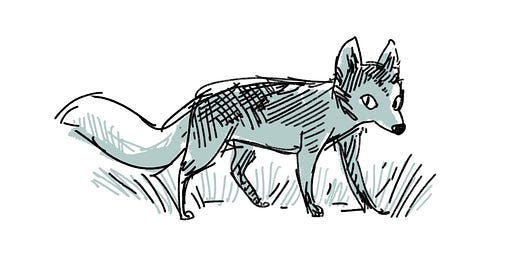


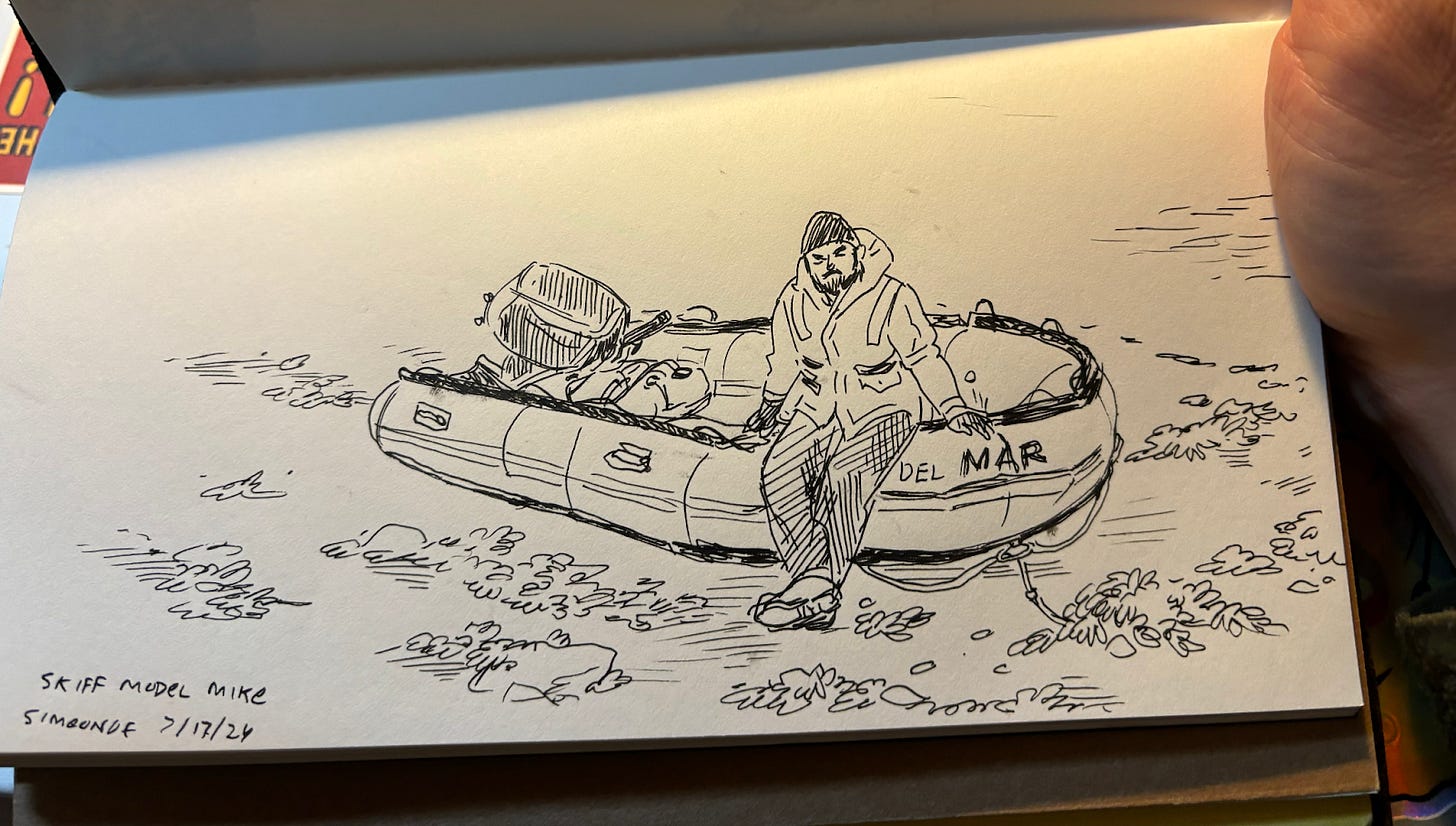
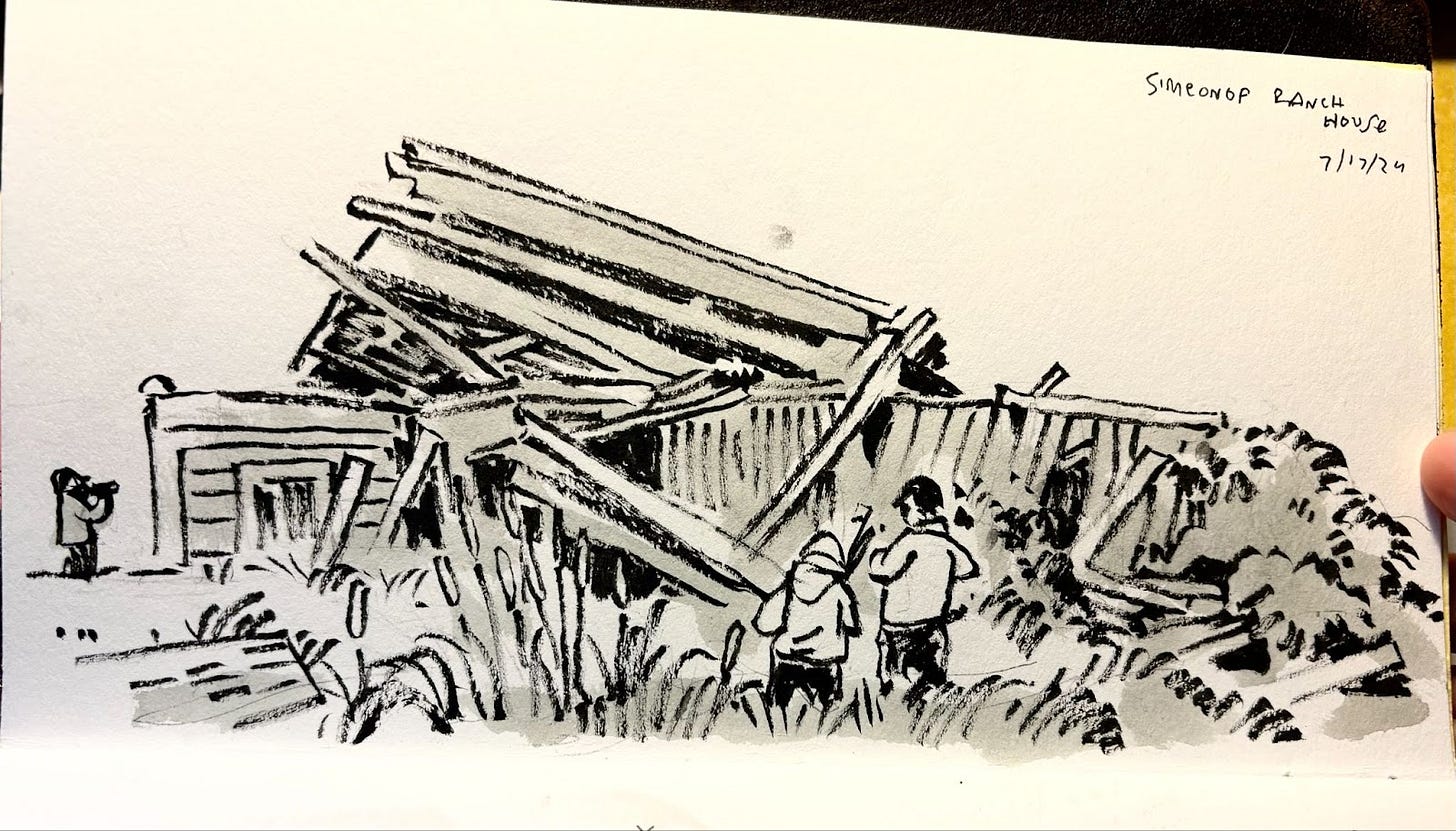
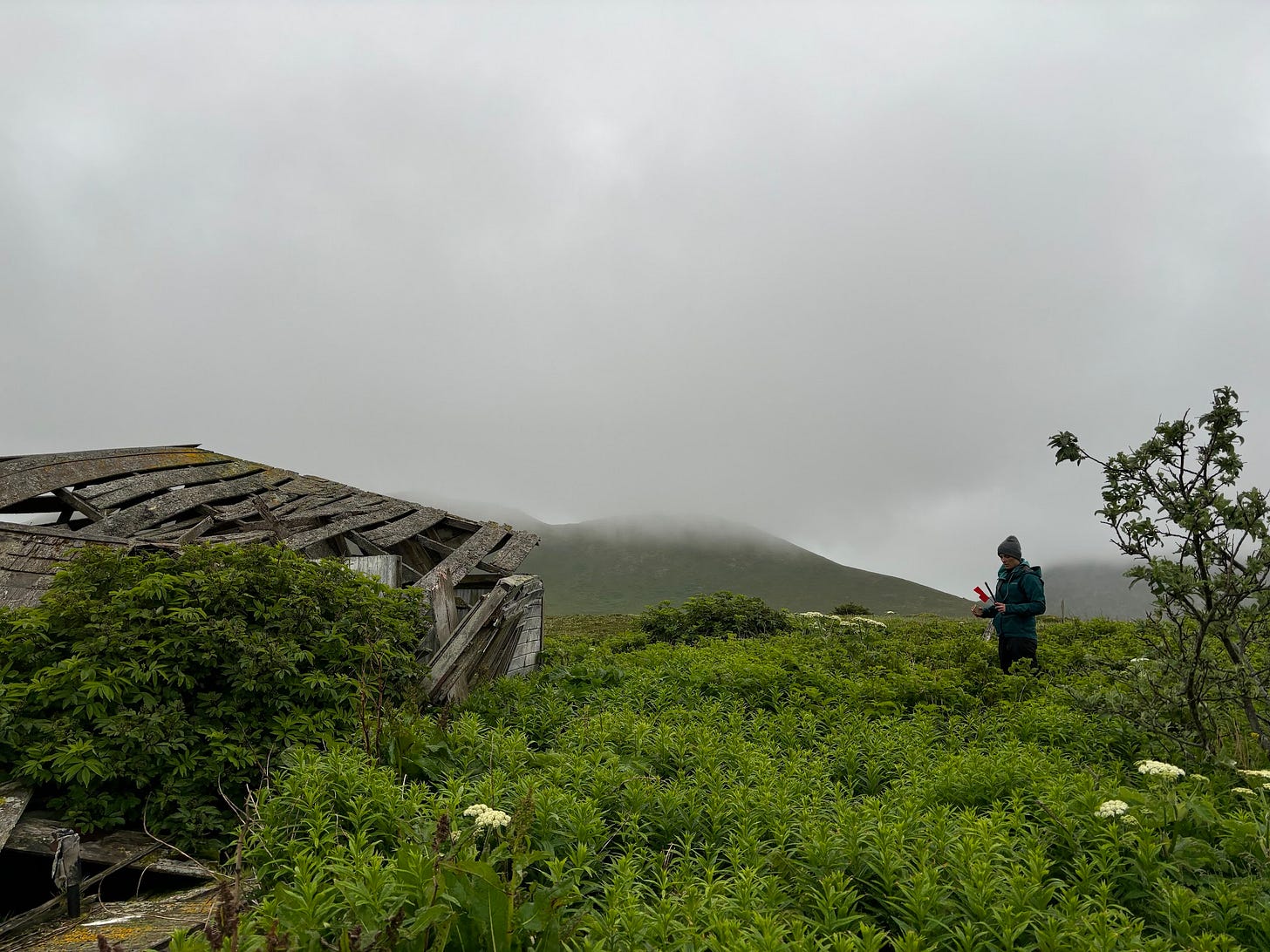
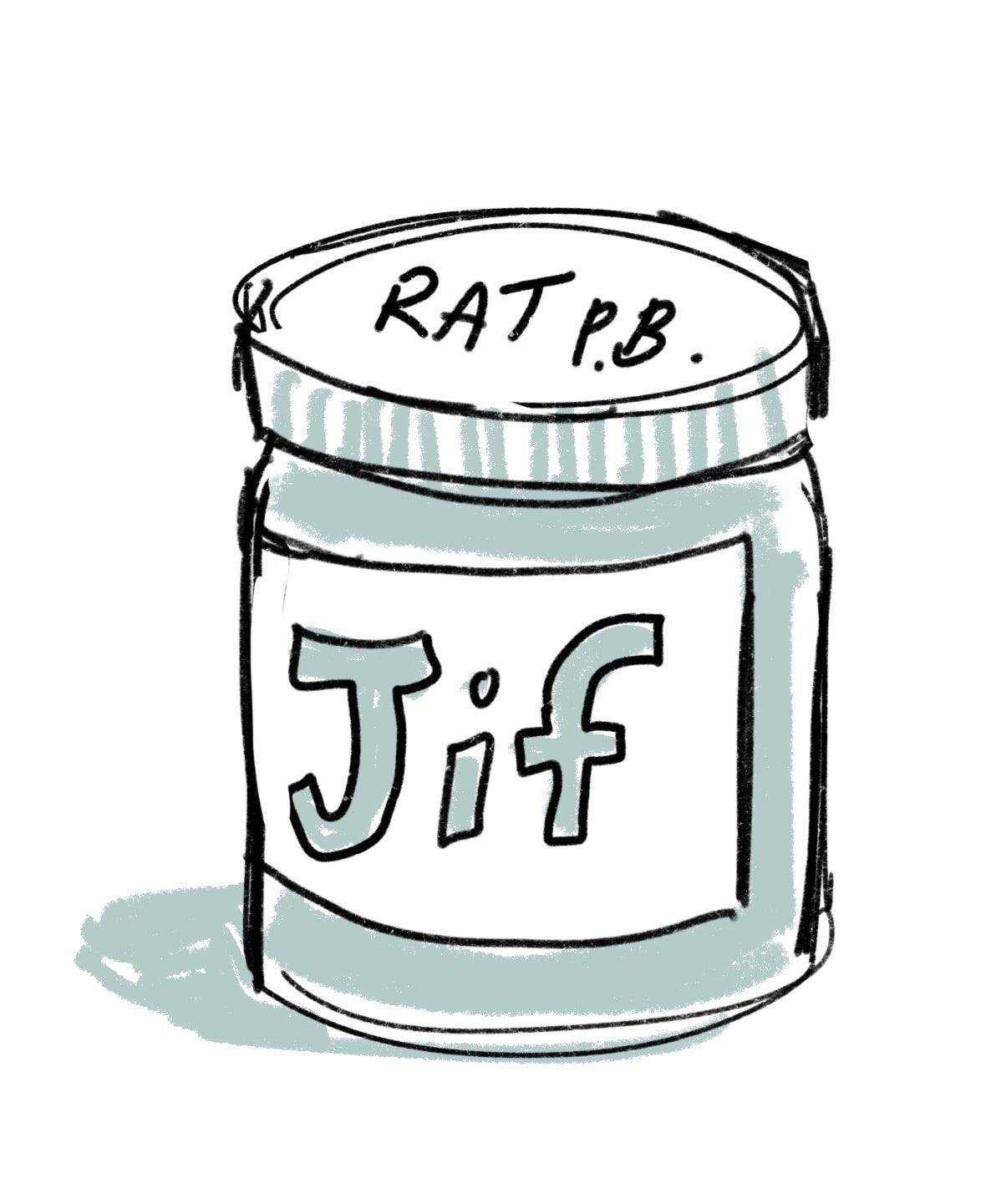




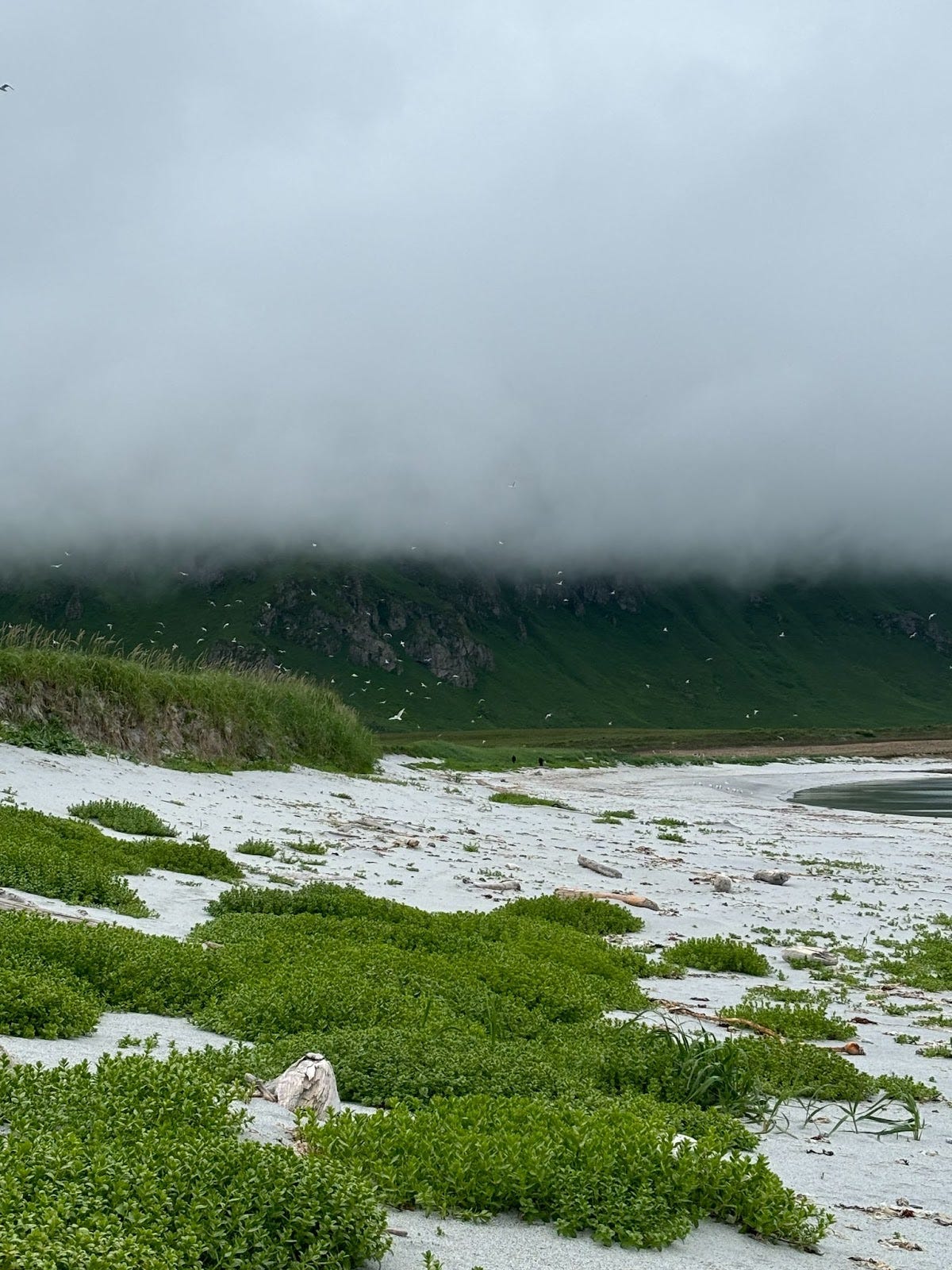


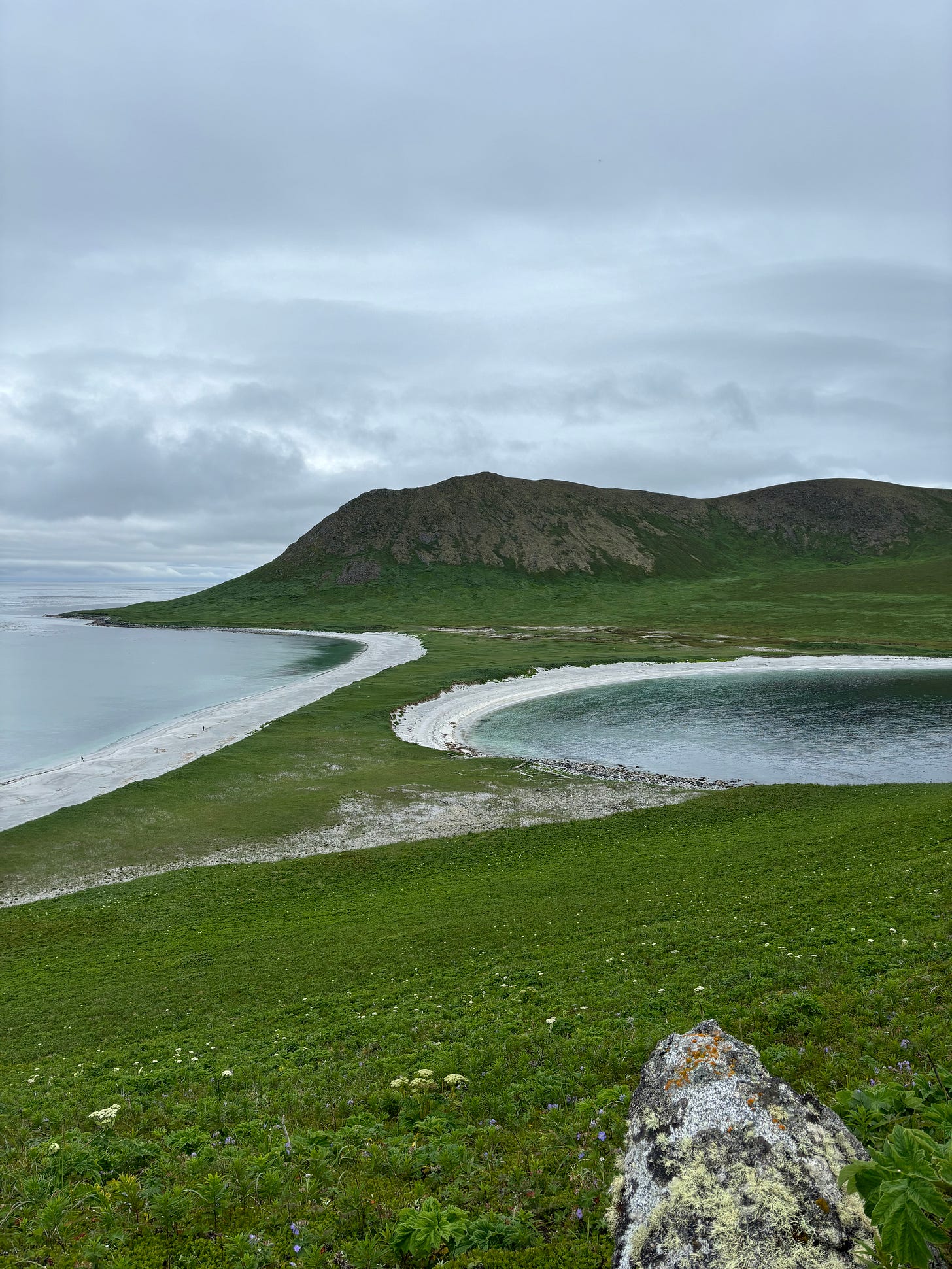
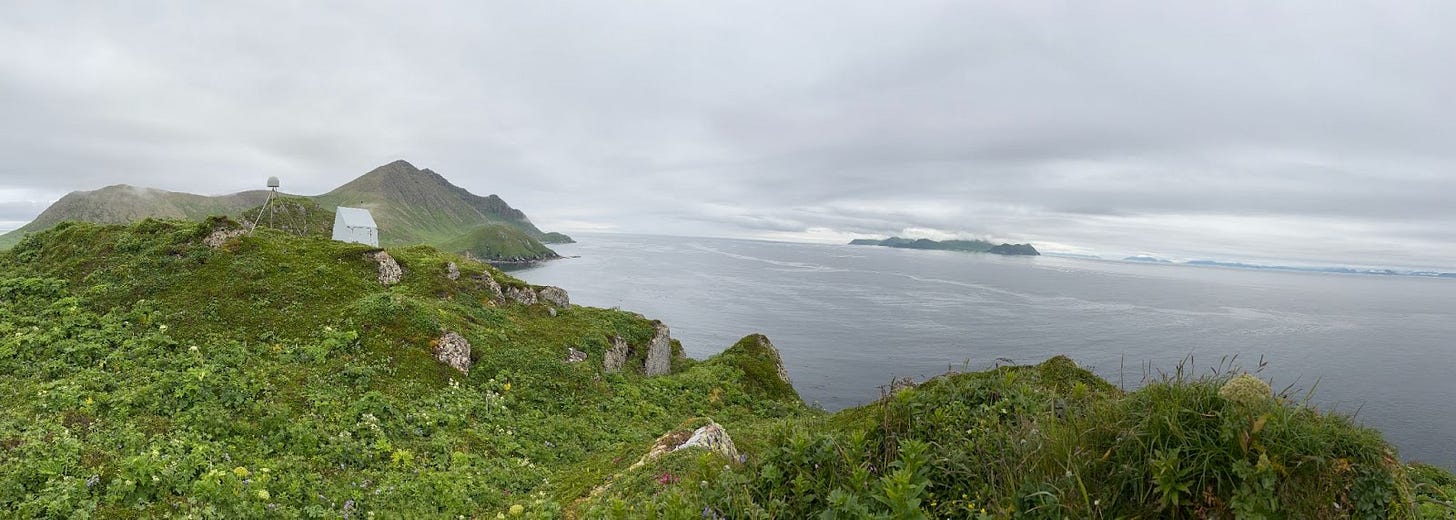


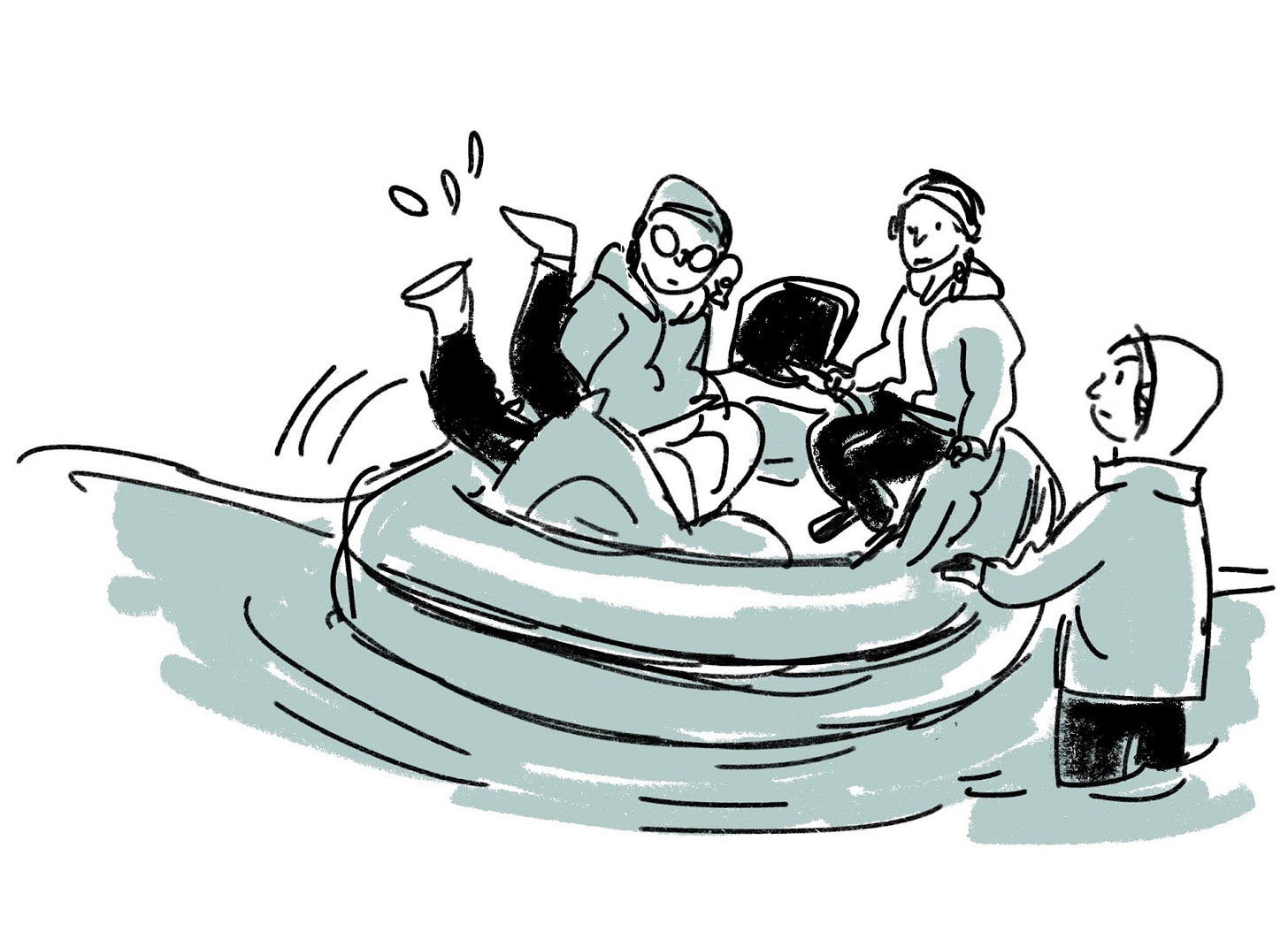
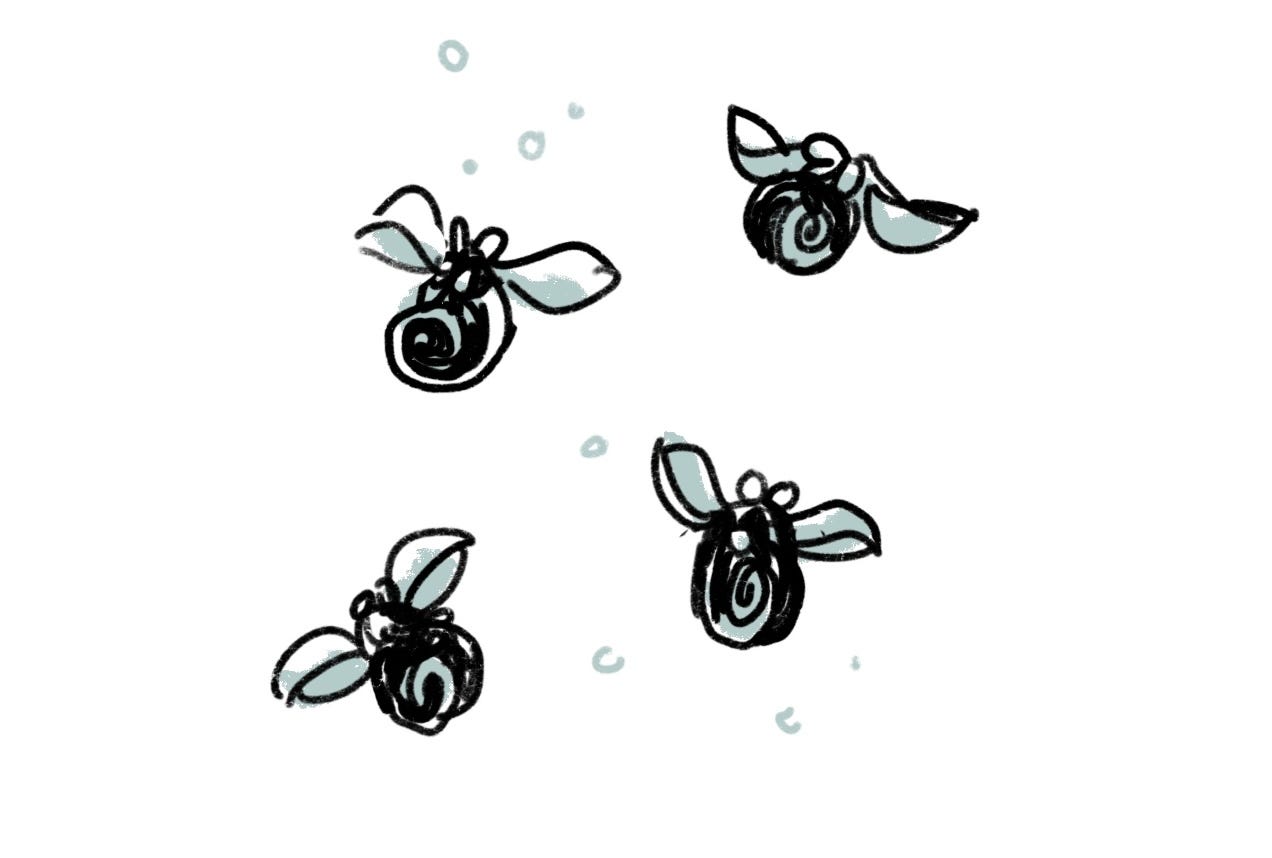
I am Stacey (the boss's) mom. I'm enjoying your blog to get a good idea of what you all are doing. I hope the rest of the trip goes well.
Absolutely loving traveling to Alaska via your Substack.